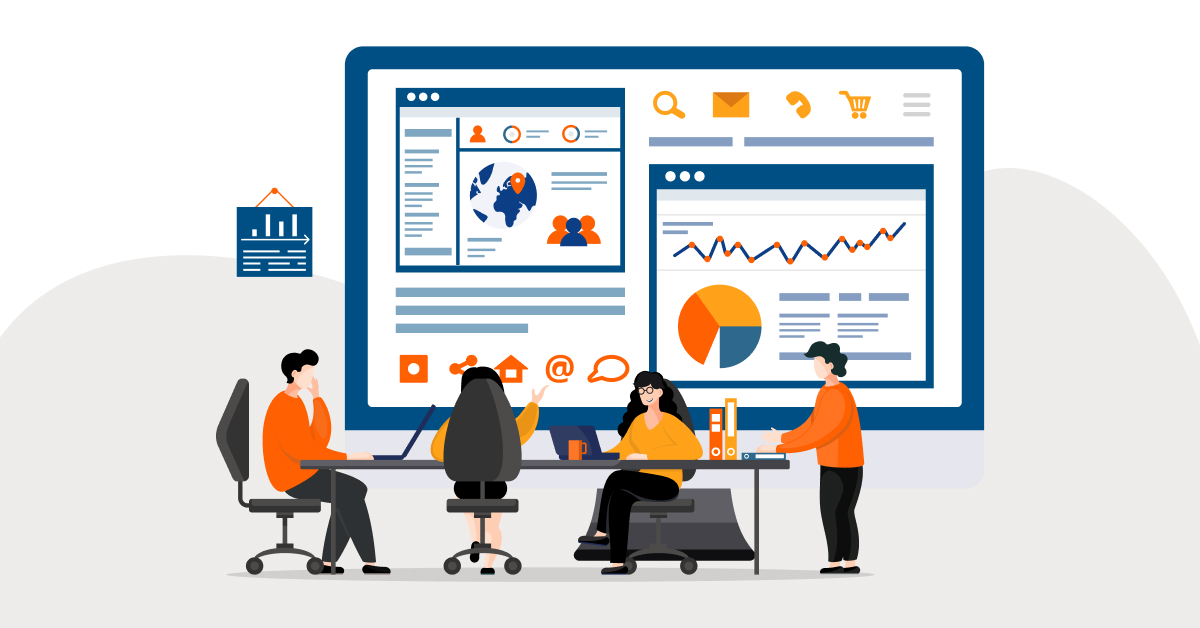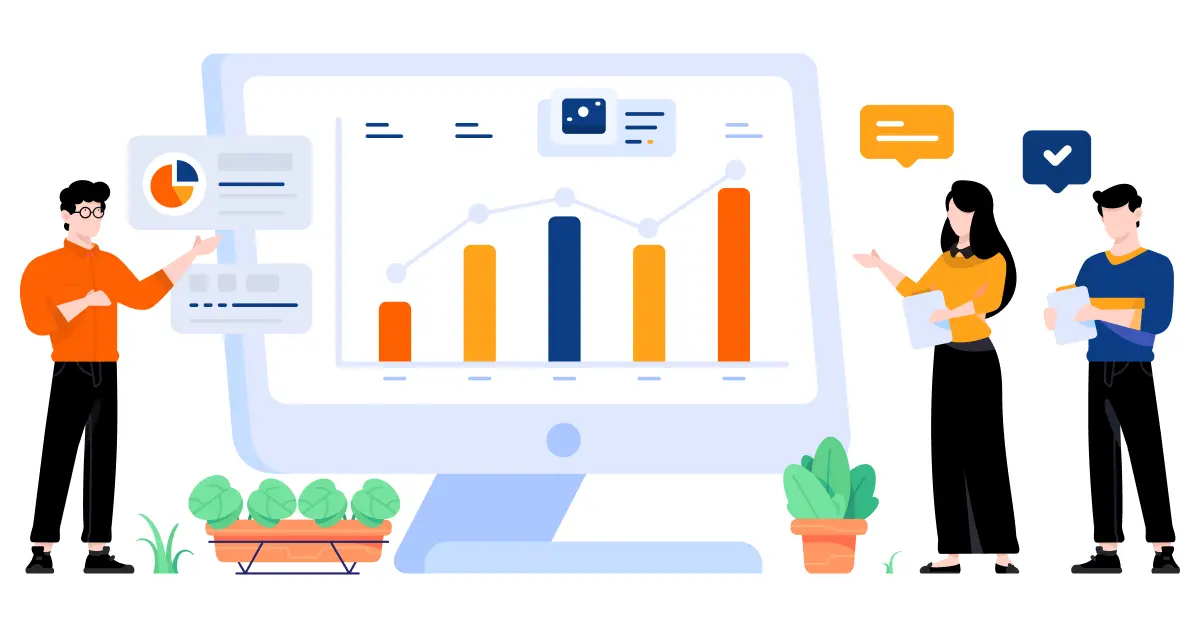
The business world moves quickly, so managing your employees is essential. More and more people are working from home, with flexible hours and mixed work models. This means that back offices must deal with new issues that make it harder to stay busy and ensure everything runs smoothly.
In 2023, the market for workforce analytics was worth USD 1.81 billion worldwide. By 2032, the market should be worth USD 6.04 billion, up from USD 2.07 billion in 2024.
A workforce analytics platform is essential for dealing with these problems because it provides complete ways to track, control, and boost employee performance. Using these tools, businesses can learn important things about how users act, track how much work gets done, and encourage a culture of responsibility and speed.
Table of contents
Importance of Managing Employees
Any company that wants to be as busy as possible and meet its strategic goals must know how to manage its workers well. When a business needs better workforce management, issues like low morale, low output, high change rates, and processes that don’t work as well as they could happen; traditional management methods don’t always work well when people work from home or in a mixed setting, so new tools and technologies are needed.
Workforce analytics platform lets back offices monitor remote employees, keep track of their output, and learn more about how users behave by using data to manage employees. These platforms have many useful features, like software for keeping an eye on employees, time tracking software for keeping track of time, and software for analyzing user behavior. This makes them essential for modern businesses.
Strategies to Enhance Back Office Operations with Workforce Analytics
1. Improve Employee Productivity
A labor data app is one of the most essential tools for making employees more productive. Managers can find places to improve and implement specific plans by monitoring key performance indicators (KPIs) and work routines. The app gives thorough reports on what employees are doing, showing which hours are helpful and which are not. This information lets managers make intelligent choices, use resources well, and set attainable performance goals.
For example, Leapmax, one of the top workforce analytics platforms, has resourceful tools for tracking and analyzing employee operational efficiency. Companies can see how well their employees are holistically by using Leapmax and taking steps to make them more productive.
2. Monitoring Remote Employees
They can only sometimes keep track of what their workers are doing and ensure they’re responsible when more people work from home. A workforce analytics platform, which gives you numerous ways to monitor your employees, can help solve this issue. These tools let managers see what their online workers are doing in real-time, which allows them to ensure they are focused and working hard.
Platforms like Leapmax have advanced tracking tools that let you record what’s on the screen, watch how apps are used, and monitor behavior. These tools make it easier for supervisors to go through user analytics even while they’re not in the office. They may ensure they remain on course and accomplish their objectives this way.
3. Tracking Employee Productivity
Employee monitoring software for keeping track of time is an important part of worker data systems. It lets managers monitor how their workers spend their time, find problems, and make things run more smoothly. Managers can improve total output, make processes more efficient, and reduce waste by tracking the time spent on different jobs.
Time tracking system that works well also helps with billing and payments, ensuring that workers are paid fairly for their work. Workforce analytics platform give managers a clear picture of their employees’ work hours by giving them detailed timesheets and reports. This lets managers make choices based on data. It helps improve track employee productivity.
4. Gaining User-Behavior Insights
Understanding how users act is important for getting employees to work harder and be more interested in their jobs. Workforce analytics platforms give employers useful information about how their workers use different apps and tools. This information helps managers figure out what training is needed, how to use the best tools, and how to improve the general experience of employees.
Insights into user behavior also help managers find patterns and trends that could point to problems like burnout or disengagement. By taking these problems ahead, companies can create a good work environment and make employees happier.
5. Enhancing Remote Team Collaboration
For remote employees and mixed teams to be successful, they need to be able to work together well. Workforce analytics platforms have many features that make it easier for online teams to work together. These include contact tools, project management software, and the ability to share files. With these benefits, teams can stay in touch, work together easily, and finish their tasks quickly.
Leapmax, for example, has built-in communication tools that help teams that work from different places stay in touch and do their best together. Companies can boost team output and ensure projects are finished on time by encouraging people to work together.
6. Optimizing Hybrid Workforce Productivity
To manage a mixed workforce, you need to be able to adapt your methods to work with both in-office and online workers. Workforce analytics systems allow managers to track the time and handle mixed teams well. These tools give management information about how well their employees are doing so they can find gaps and implement plans to boost output.
A hybrid workforce may do more work if you set clear expectations, provide frequent feedback, and promote a culture of accountability. Workforce statistics platforms provide the data you need to monitor advancement and ensure that employees—whether in the office or working from home—are doing their best work.
7. Implementing Employee Monitoring Software
A big part of worker data tools is employee monitoring software that monitors employees. It shows managers what their employees are doing in real-time, which helps them ensure that their workers are involved and getting things done. Keep an eye on website views, app use, and idle time to fully understand how well your workers are doing.
When you utilize software to monitor your employees, people could be concerned about their privacy. However, it’s crucial to be transparent and truthful about this. Building trust and ensuring employees understand the advantages may be achieved by explaining why they are being observed and how the data will be utilized.
Conclusion
In conclusion, a workforce analytics platform is a useful tool for back offices that want to boost output, keep an eye on online workers, and improve the management of mixed workforces.
Using these tools, businesses can learn important things about how users behave, encourage a culture of responsibility, and keep track of their employees’ productivity and efficiency. Tools like Leapmax help companies stay competitive in a world that is always changing by providing complete answers to the unique problems that come up when managing a modern workforce.
You must handle your employees well to reach strategic goals and keep operations running smoothly. Workforce analytics platform give you a data-driven way to keep an eye on, control, and boost staff efficiency. Back offices can ensure employees are involved, productive, and on track with the organization’s goals using this employee monitoring tool.







